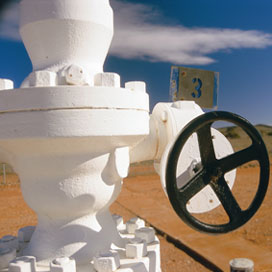A more detailed explanation of the general income tax consequences of the merger can be found in section 10 of the Scheme Booklet.
Set out below is a summary of the general tax consequences for Securityholders. It is not tax advice Securityholders can rely on. Securityholders should obtain their own tax advice.
The merger resulted in Securityholders disposing of their Prime Infrastructure stapled securities to Brookfield Infrastructure Partners L.P. (BIP) in exchange for either cash, cash and units in BIP or solely units in BIP.
Regardless of what consideration Securityholders received, public Securityholders no longer hold Prime Infrastructure stapled securities.
There are terms below which have tax and legal meanings which may differ from general interpretation. Refer to section 10 of the Scheme Booklet for more details.
The disposal of stapled securities is a capital gains tax (CGT) event. For Australian tax resident Securityholders the CGT consequences are determined by comparing the capital proceeds from the merger with the cost base (or reduced cost base) of the Prime Infrastructure stapled securities.
The capital proceeds is the amount that a Securityholder received from the merger. The cost base (or reduced cost base) is the amount that a Securityholder paid for the Prime Infrastructure stapled securities adjusted for any tax deferred amounts received from Prime Infrastructure.
The value of the BIP units received as capital proceeds from the merger per Prime Infrastructure stapled security are set out below. Securityholders will have been provided with a statement setting out the cash received from the merger. Securityholders should rely on the statement provided to them in calculating the cash component of the capital proceeds from the merger. The total of any cash received and the market value of BIP units received will equal the capital proceeds from the merger.
| Number of BIP Units per Stapled Security | Market Value per Stapled Security |
|---|---|
| 0.24 | A$4.9564 (A$20.6517 per BIP unit) |
The market value of the capital proceeds has been calculated:
(a) using the volume weighted average price of BIP units traded on the New York Stock Exchange on 8 December 2010 (US time), being the first trading day of the BIP units issued to Securityholders through the merger (US$20.788);
(b) converting the above price to Australian dollars at the average USD/AUD exchange rate for 9 December 2010 (Australian time) as per the Australian Taxation Office (ATO) website being 1.0066.
The calculation of the market value of the capital proceeds has been calculated on the basis of the abovementioned assumptions. Securityholders may make different assumptions in calculating this market value. However, the ATO has historically accepted calculations of market value for publicly traded securities made on the same basis as those used above.
The Special Distribution of $0.20 per stapled security would technically be included in the capital proceeds received from the merger. The Special Distribution was 100% tax deferred. Consequently, there will be no difference in the capital gain or capital loss calculation whether the Special Distribution is included in the capital proceeds or as a reduction of cost base. For consistency with other tax deferred distributions, the Special Distribution is included as a reduction of the cost base calculation below.
The cost base (reduced cost base) of the stapled securities depends on the amount paid for the Prime Infrastructure stapled securities plus any indicidental costs of acquisition reduced by the amount of any tax deferred distributions received.
Tax deferred distributions paid from the date of the recapitalisation (20 November 2009) are as set out below:
| Quarter | Paid | $ Amount per stapled security |
|---|---|---|
| Mar 2010 | 31 May 2010 | 0.075 |
| Jun 2010 | 31 Aug 2010 | 0.075 |
| Sep 2010 | 30 Nov 2010 | 0.075 |
| Special Distribution | 8 Dec 2010 | 0.200 |
| Total Reduction in Cost Base | 0.425 |
|---|
If a Securityholder held the stapled securities for 12 months or more before the merger and made a capital gain, that gain can be reduced by 50% for individuals (holding stapled securities directly or through a trust) and 33% for trustees/responsible entities of complying superannuation funds. Corporate Securityholders cannot reduce the capital gain.
Non-Australian tax resident Securityholders are only subject to Australian capital gains tax if they held 10% or more stapled securities and Prime Infrastructure has a majority of Australian real property assets at the time of the merger.
At the time of the merger, it is not considered that the majority of assets held by Prime Infrastructure are real property assets. Therefore, there ought not be any Australian capital gains tax implications for non-Australian tax resident Securityholders. Note that for non-Australian tax resident Securityholders who held Prime Infrastructure stapled securities on revenue account, the Australian tax consequences will be different and these Securityholders should obtain independent Australian tax advice.
